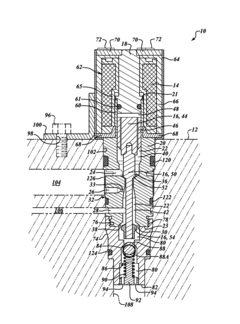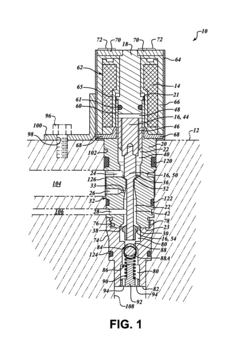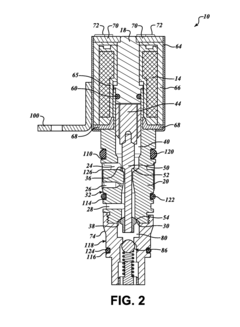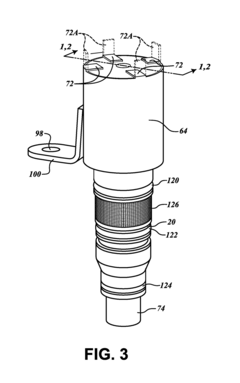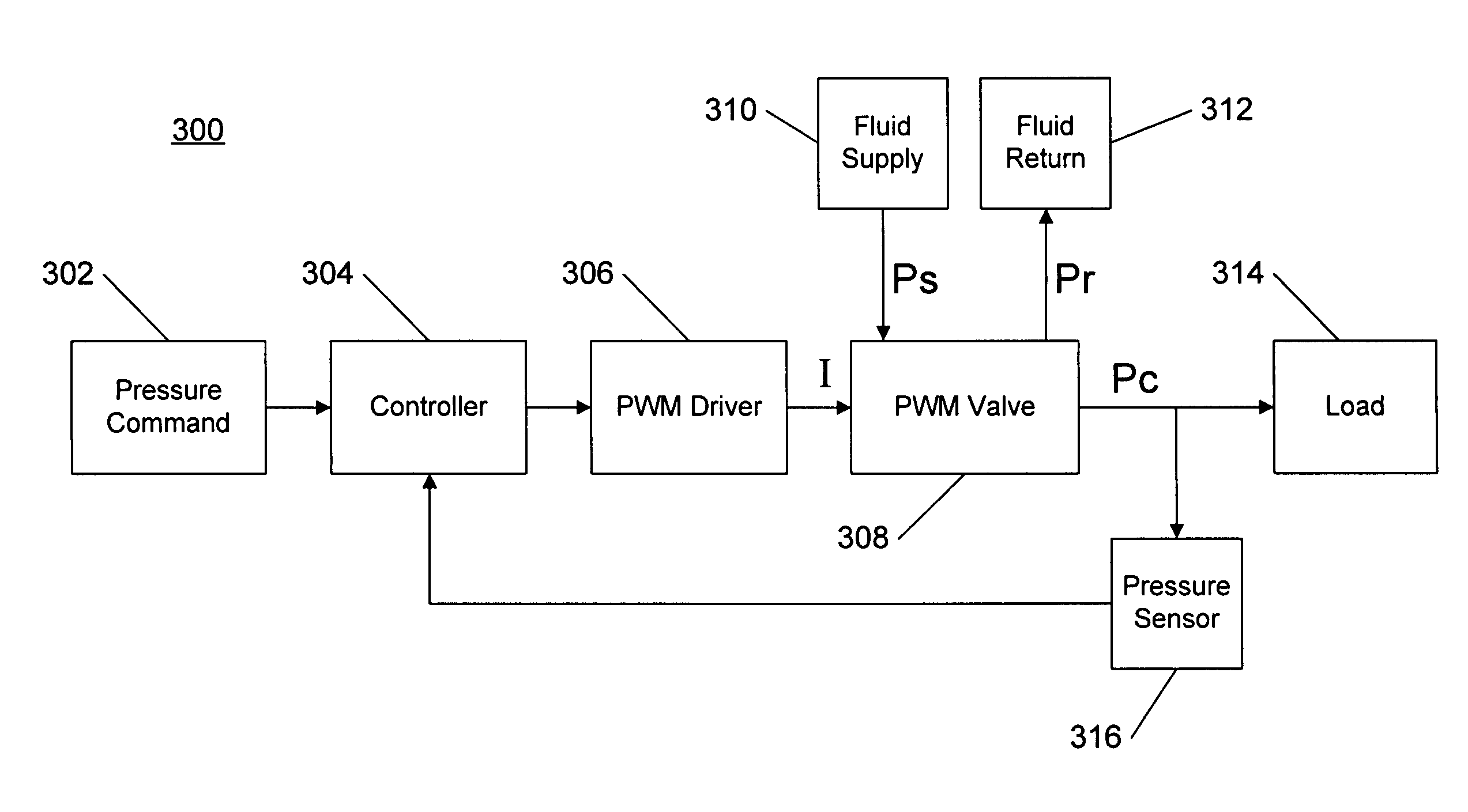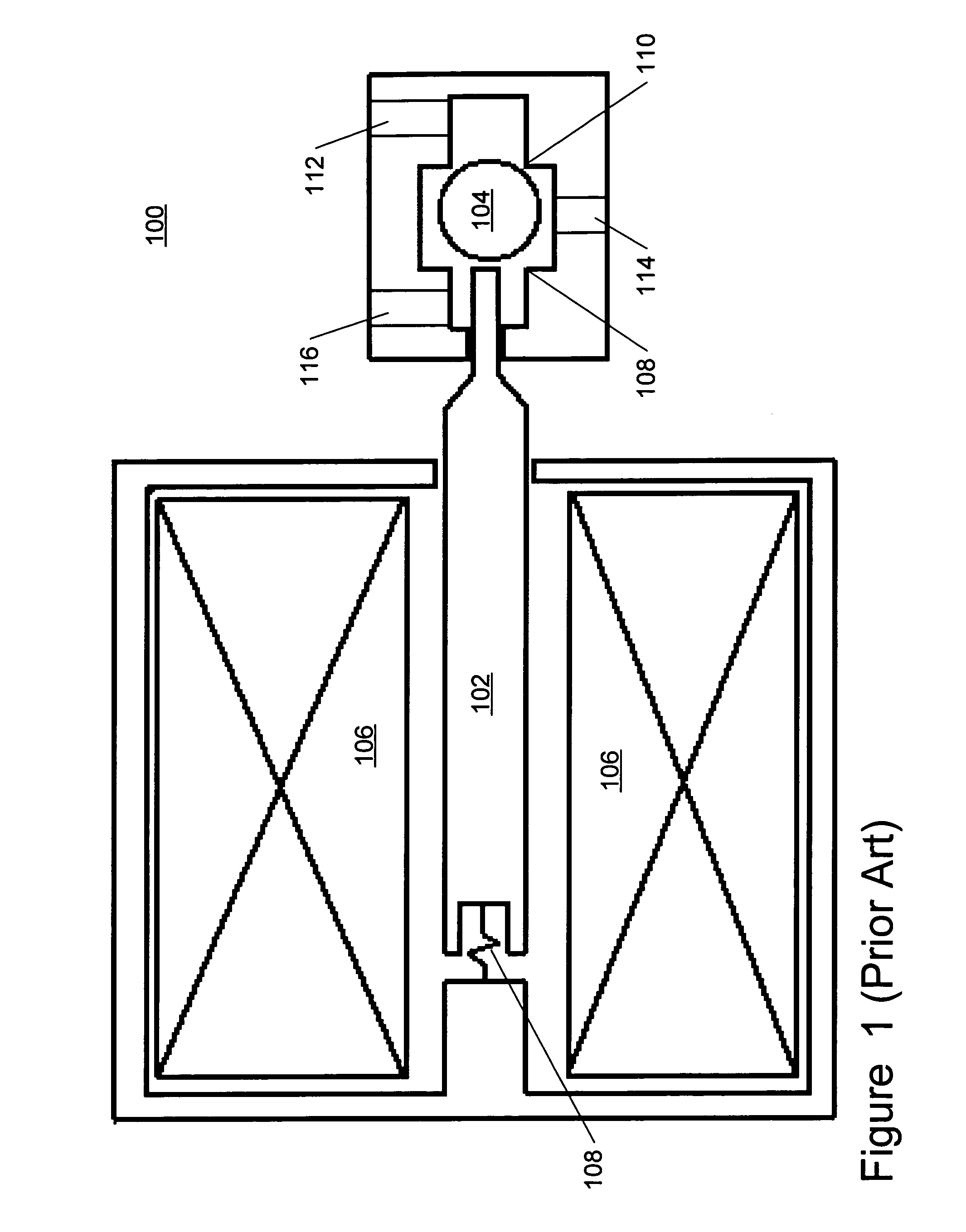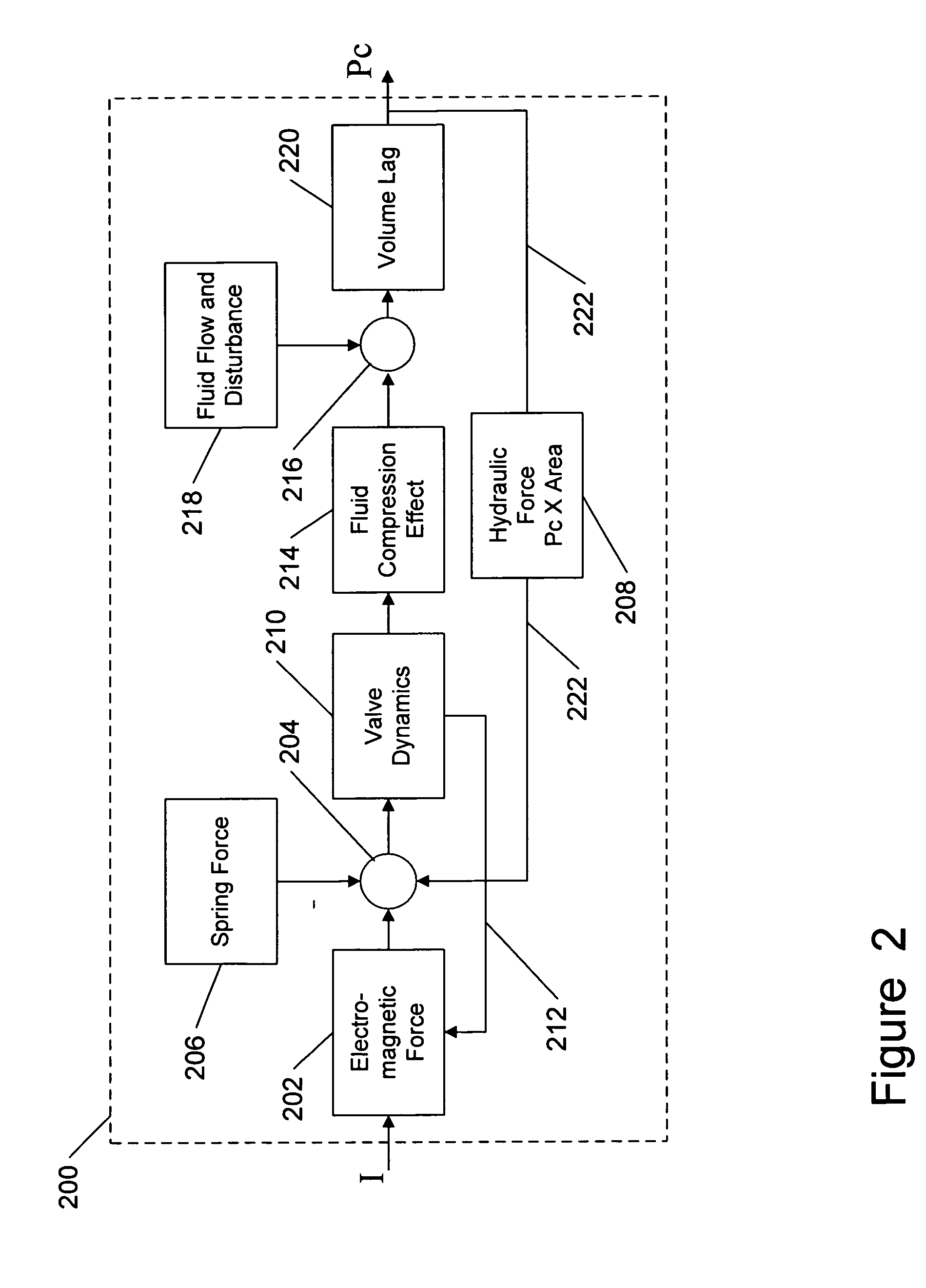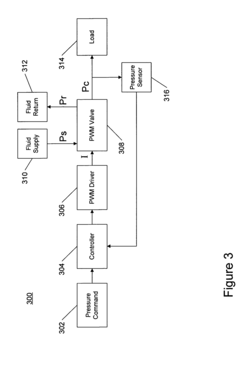How Solenoid Valves Enable Autonomous Process Adjustments in Factories
JUL 23, 20259 MIN READ
Generate Your Research Report Instantly with AI Agent
Patsnap Eureka helps you evaluate technical feasibility & market potential.
Solenoid Valve Evolution
Solenoid valves have undergone significant evolution since their inception in the early 20th century. Initially designed for simple on-off control of fluid flow, these electromechanical devices have transformed into sophisticated components crucial for autonomous process adjustments in modern factories.
The early solenoid valves of the 1910s and 1920s were primarily used in basic industrial applications, such as controlling water flow in irrigation systems. These valves were relatively large, power-hungry, and limited in their functionality. As manufacturing processes became more complex in the 1930s and 1940s, solenoid valves saw improvements in reliability and efficiency, allowing for their integration into more diverse industrial settings.
The 1950s and 1960s marked a significant leap in solenoid valve technology with the introduction of miniaturization techniques. This reduction in size, coupled with enhanced durability, expanded their application scope, particularly in the automotive and aerospace industries. The advent of solid-state electronics in the 1970s further revolutionized solenoid valve design, enabling more precise control and faster response times.
The 1980s and 1990s witnessed the integration of digital control systems with solenoid valves, paving the way for programmable logic controllers (PLCs) to manage multiple valves simultaneously. This development was crucial in laying the groundwork for autonomous process adjustments in factories. During this period, solenoid valves also saw improvements in energy efficiency and the ability to handle a wider range of pressures and flow rates.
The turn of the millennium brought about a new era for solenoid valves with the rise of Industry 4.0 concepts. Smart solenoid valves, equipped with sensors and communication capabilities, emerged in the 2000s. These valves could not only execute commands but also provide real-time feedback on their status and performance, enabling predictive maintenance and more sophisticated process control.
In recent years, the evolution of solenoid valves has focused on enhancing their role in autonomous systems. Advanced materials and manufacturing techniques have resulted in valves with longer lifespans and higher precision. The integration of artificial intelligence and machine learning algorithms has enabled solenoid valves to adapt to changing process conditions autonomously, optimizing flow control without human intervention.
Today, state-of-the-art solenoid valves are integral components of smart factories, contributing to the realization of fully autonomous production lines. They can communicate with other devices via industrial IoT networks, make decisions based on complex algorithms, and adjust their operation in real-time to maintain optimal process conditions. This evolution has transformed solenoid valves from simple actuators to intelligent nodes in the industrial automation ecosystem, playing a pivotal role in enabling autonomous process adjustments in modern manufacturing environments.
The early solenoid valves of the 1910s and 1920s were primarily used in basic industrial applications, such as controlling water flow in irrigation systems. These valves were relatively large, power-hungry, and limited in their functionality. As manufacturing processes became more complex in the 1930s and 1940s, solenoid valves saw improvements in reliability and efficiency, allowing for their integration into more diverse industrial settings.
The 1950s and 1960s marked a significant leap in solenoid valve technology with the introduction of miniaturization techniques. This reduction in size, coupled with enhanced durability, expanded their application scope, particularly in the automotive and aerospace industries. The advent of solid-state electronics in the 1970s further revolutionized solenoid valve design, enabling more precise control and faster response times.
The 1980s and 1990s witnessed the integration of digital control systems with solenoid valves, paving the way for programmable logic controllers (PLCs) to manage multiple valves simultaneously. This development was crucial in laying the groundwork for autonomous process adjustments in factories. During this period, solenoid valves also saw improvements in energy efficiency and the ability to handle a wider range of pressures and flow rates.
The turn of the millennium brought about a new era for solenoid valves with the rise of Industry 4.0 concepts. Smart solenoid valves, equipped with sensors and communication capabilities, emerged in the 2000s. These valves could not only execute commands but also provide real-time feedback on their status and performance, enabling predictive maintenance and more sophisticated process control.
In recent years, the evolution of solenoid valves has focused on enhancing their role in autonomous systems. Advanced materials and manufacturing techniques have resulted in valves with longer lifespans and higher precision. The integration of artificial intelligence and machine learning algorithms has enabled solenoid valves to adapt to changing process conditions autonomously, optimizing flow control without human intervention.
Today, state-of-the-art solenoid valves are integral components of smart factories, contributing to the realization of fully autonomous production lines. They can communicate with other devices via industrial IoT networks, make decisions based on complex algorithms, and adjust their operation in real-time to maintain optimal process conditions. This evolution has transformed solenoid valves from simple actuators to intelligent nodes in the industrial automation ecosystem, playing a pivotal role in enabling autonomous process adjustments in modern manufacturing environments.
Industrial Automation Demand
The demand for industrial automation has been steadily increasing in recent years, driven by the need for improved efficiency, productivity, and cost-effectiveness in manufacturing processes. Solenoid valves play a crucial role in enabling autonomous process adjustments in factories, contributing significantly to the growing trend of smart manufacturing and Industry 4.0.
The global industrial automation market has experienced substantial growth, with projections indicating continued expansion in the coming years. This growth is fueled by factors such as the increasing adoption of robotics, artificial intelligence, and Internet of Things (IoT) technologies in manufacturing environments. Solenoid valves, as key components in fluid control systems, are integral to this automation landscape.
Manufacturing industries across various sectors, including automotive, chemical, food and beverage, and pharmaceuticals, are increasingly embracing automation to streamline their operations. The demand for solenoid valves in these industries is particularly high due to their ability to provide precise control over fluid flow, pressure, and direction in automated systems.
The push for energy efficiency and sustainability in industrial processes has also contributed to the rising demand for advanced solenoid valve technologies. These valves can help optimize resource utilization, reduce waste, and improve overall system performance, aligning with the growing emphasis on environmentally friendly manufacturing practices.
Furthermore, the COVID-19 pandemic has accelerated the adoption of automation technologies in factories, as companies seek to reduce reliance on human labor and maintain production continuity in challenging circumstances. This has further boosted the demand for solenoid valves and other automation components that enable remote monitoring and control of industrial processes.
The integration of solenoid valves with advanced control systems and sensors has opened up new possibilities for predictive maintenance and real-time process optimization. This has led to increased interest from manufacturers looking to implement condition-based monitoring and proactive maintenance strategies, further driving the demand for smart solenoid valve solutions.
As factories continue to evolve towards greater autonomy and flexibility, the role of solenoid valves in enabling adaptive manufacturing processes is becoming increasingly critical. The ability of these valves to respond quickly and accurately to changing production requirements makes them essential components in the development of agile and reconfigurable manufacturing systems.
The global industrial automation market has experienced substantial growth, with projections indicating continued expansion in the coming years. This growth is fueled by factors such as the increasing adoption of robotics, artificial intelligence, and Internet of Things (IoT) technologies in manufacturing environments. Solenoid valves, as key components in fluid control systems, are integral to this automation landscape.
Manufacturing industries across various sectors, including automotive, chemical, food and beverage, and pharmaceuticals, are increasingly embracing automation to streamline their operations. The demand for solenoid valves in these industries is particularly high due to their ability to provide precise control over fluid flow, pressure, and direction in automated systems.
The push for energy efficiency and sustainability in industrial processes has also contributed to the rising demand for advanced solenoid valve technologies. These valves can help optimize resource utilization, reduce waste, and improve overall system performance, aligning with the growing emphasis on environmentally friendly manufacturing practices.
Furthermore, the COVID-19 pandemic has accelerated the adoption of automation technologies in factories, as companies seek to reduce reliance on human labor and maintain production continuity in challenging circumstances. This has further boosted the demand for solenoid valves and other automation components that enable remote monitoring and control of industrial processes.
The integration of solenoid valves with advanced control systems and sensors has opened up new possibilities for predictive maintenance and real-time process optimization. This has led to increased interest from manufacturers looking to implement condition-based monitoring and proactive maintenance strategies, further driving the demand for smart solenoid valve solutions.
As factories continue to evolve towards greater autonomy and flexibility, the role of solenoid valves in enabling adaptive manufacturing processes is becoming increasingly critical. The ability of these valves to respond quickly and accurately to changing production requirements makes them essential components in the development of agile and reconfigurable manufacturing systems.
Solenoid Tech Challenges
Solenoid valves face several key technical challenges in enabling autonomous process adjustments in factory settings. One of the primary issues is response time and precision control. As industrial processes become increasingly complex and demand higher levels of automation, solenoid valves must operate with split-second accuracy and repeatability. Achieving consistent, rapid response times across varying pressure conditions and fluid types remains a significant hurdle.
Durability and reliability present another major challenge. Factory environments often involve harsh conditions, including extreme temperatures, corrosive chemicals, and high-pressure fluids. Solenoid valves must maintain their performance and integrity over extended periods without failure or degradation. Developing materials and designs that can withstand these demanding conditions while maintaining precise operation is an ongoing area of research and development.
Energy efficiency is a growing concern in industrial automation. Traditional solenoid valves can consume significant amounts of power, especially in applications requiring continuous operation. Improving the energy efficiency of solenoid valves without compromising their performance is a critical challenge that engineers are working to address through innovative designs and materials.
Miniaturization and integration pose additional technical hurdles. As factory processes become more compact and modular, there is a growing need for smaller, more integrated solenoid valve solutions. Reducing the size of valves while maintaining or improving their performance characteristics requires advancements in materials science and manufacturing techniques.
Compatibility with Industry 4.0 and IoT systems is another significant challenge. Modern factories increasingly rely on interconnected, data-driven systems for process optimization. Solenoid valves must be capable of seamless integration with these digital ecosystems, requiring the development of smart valve technologies with embedded sensors, communication capabilities, and self-diagnostic features.
Customization and flexibility represent ongoing challenges in solenoid valve design. Different industrial processes have unique requirements in terms of flow rates, pressure ranges, and fluid types. Creating modular, easily customizable valve solutions that can be rapidly adapted to diverse applications without sacrificing performance or reliability is a complex engineering task.
Finally, environmental concerns and regulatory compliance add another layer of complexity to solenoid valve development. As industries face stricter environmental regulations, valve manufacturers must innovate to reduce the environmental impact of their products, including minimizing leakage, improving recyclability, and eliminating hazardous materials from valve components.
Durability and reliability present another major challenge. Factory environments often involve harsh conditions, including extreme temperatures, corrosive chemicals, and high-pressure fluids. Solenoid valves must maintain their performance and integrity over extended periods without failure or degradation. Developing materials and designs that can withstand these demanding conditions while maintaining precise operation is an ongoing area of research and development.
Energy efficiency is a growing concern in industrial automation. Traditional solenoid valves can consume significant amounts of power, especially in applications requiring continuous operation. Improving the energy efficiency of solenoid valves without compromising their performance is a critical challenge that engineers are working to address through innovative designs and materials.
Miniaturization and integration pose additional technical hurdles. As factory processes become more compact and modular, there is a growing need for smaller, more integrated solenoid valve solutions. Reducing the size of valves while maintaining or improving their performance characteristics requires advancements in materials science and manufacturing techniques.
Compatibility with Industry 4.0 and IoT systems is another significant challenge. Modern factories increasingly rely on interconnected, data-driven systems for process optimization. Solenoid valves must be capable of seamless integration with these digital ecosystems, requiring the development of smart valve technologies with embedded sensors, communication capabilities, and self-diagnostic features.
Customization and flexibility represent ongoing challenges in solenoid valve design. Different industrial processes have unique requirements in terms of flow rates, pressure ranges, and fluid types. Creating modular, easily customizable valve solutions that can be rapidly adapted to diverse applications without sacrificing performance or reliability is a complex engineering task.
Finally, environmental concerns and regulatory compliance add another layer of complexity to solenoid valve development. As industries face stricter environmental regulations, valve manufacturers must innovate to reduce the environmental impact of their products, including minimizing leakage, improving recyclability, and eliminating hazardous materials from valve components.
Current Autonomous Systems
01 Autonomous adjustment of solenoid valve operation
Systems that allow solenoid valves to autonomously adjust their operation based on various parameters. These systems can include sensors, controllers, and feedback mechanisms to optimize valve performance, timing, and efficiency without manual intervention.- Autonomous adjustment of solenoid valves in fluid systems: Solenoid valves can be integrated into fluid systems with autonomous adjustment capabilities. These systems use sensors and control algorithms to monitor fluid flow, pressure, and other parameters, automatically adjusting valve operation to maintain optimal performance. This technology enhances efficiency and reduces the need for manual intervention in various industrial processes.
- Self-learning and adaptive solenoid valve control: Advanced solenoid valve systems incorporate self-learning and adaptive control mechanisms. These systems analyze historical data and real-time inputs to continuously improve their performance. Machine learning algorithms enable the valves to predict and respond to changing conditions, optimizing fluid flow and pressure regulation across different operating scenarios.
- Integration of solenoid valves with IoT and remote monitoring: Solenoid valves are being integrated with Internet of Things (IoT) technology, allowing for remote monitoring and control. This enables real-time data collection, analysis, and adjustment of valve operations from centralized control systems or mobile devices. The integration enhances predictive maintenance capabilities and allows for more efficient management of large-scale fluid systems.
- Energy-efficient solenoid valve designs for autonomous systems: New designs focus on improving the energy efficiency of solenoid valves in autonomous systems. These innovations include low-power actuation mechanisms, energy harvesting technologies, and smart power management systems. By reducing energy consumption, these valves can operate for extended periods in remote or self-contained applications with minimal maintenance.
- Multi-functional solenoid valves for complex process control: Advanced solenoid valve designs incorporate multiple functions within a single unit, allowing for more complex and nuanced process control. These valves can simultaneously regulate flow rates, pressures, and fluid mixing ratios, adapting to varying process requirements autonomously. This multi-functionality reduces system complexity and improves overall process efficiency in automated industrial applications.
02 Adaptive control of solenoid valves in fluid systems
Implementation of adaptive control algorithms for solenoid valves in fluid systems. These algorithms can adjust valve timing, opening duration, and flow rates based on real-time system conditions, improving overall system efficiency and performance.Expand Specific Solutions03 Self-calibrating solenoid valve systems
Development of solenoid valve systems capable of self-calibration. These systems can automatically adjust their parameters to compensate for wear, environmental changes, or variations in fluid properties, ensuring consistent performance over time.Expand Specific Solutions04 Integration of solenoid valves with IoT and smart systems
Incorporation of solenoid valves into Internet of Things (IoT) and smart systems. This integration allows for remote monitoring, control, and autonomous decision-making based on data from multiple sources, enhancing overall system intelligence and adaptability.Expand Specific Solutions05 Fault detection and self-correction in solenoid valve systems
Implementation of fault detection and self-correction mechanisms in solenoid valve systems. These features enable the system to identify potential issues, such as valve sticking or leakage, and autonomously adjust operation or initiate maintenance procedures to prevent failures.Expand Specific Solutions
Key Solenoid Manufacturers
The solenoid valve market for autonomous process adjustments in factories is in a growth phase, driven by increasing industrial automation and Industry 4.0 initiatives. The global market size is projected to expand significantly, with key players like Eaton Corp., Robert Bosch GmbH, and Emerson Electric Co. leading the way. These companies are investing heavily in R&D to improve valve precision, reliability, and integration with IoT systems. The technology is maturing rapidly, with advancements in materials, miniaturization, and smart control capabilities. Emerging players like Koganei Corp. and RPE Srl are also contributing to innovation, particularly in niche applications and specialized industries.
Eaton Corp.
Technical Solution: Eaton's solenoid valve technology for autonomous process adjustments in factories focuses on intelligent fluid power systems. Their AxisPro® proportional valves utilize closed-loop control and onboard electronics to enable precise, dynamic flow control[1]. These valves integrate sensors and microprocessors to continuously monitor and adjust fluid flow rates, pressure, and temperature in real-time. Eaton's system can communicate with factory automation networks via industrial protocols like EtherNet/IP and PROFINET, allowing for seamless integration with existing control systems[2]. The valves can be programmed to respond to changing process conditions autonomously, optimizing performance and energy efficiency across various industrial applications.
Strengths: High precision control, network integration, and energy efficiency. Weaknesses: May require significant initial investment and specialized maintenance.
Robert Bosch GmbH
Technical Solution: Bosch's approach to enabling autonomous process adjustments in factories through solenoid valves centers on their Rexroth 4WRPEH series of high-response valves. These valves feature integrated digital electronics and closed-loop control, allowing for precise and dynamic regulation of flow and pressure[3]. Bosch's system incorporates advanced spool position control and pressure sensors, enabling real-time adjustments based on process feedback. The valves can be seamlessly integrated into Industry 4.0 environments through OPC UA communication protocols, facilitating data exchange with higher-level control systems[4]. Bosch's solution also includes predictive maintenance capabilities, using valve performance data to anticipate and prevent potential failures, thereby enhancing overall system reliability and uptime.
Strengths: High-speed response, Industry 4.0 compatibility, and predictive maintenance features. Weaknesses: Complexity may lead to higher initial costs and require specialized training for operation and maintenance.
Innovative Valve Designs
Solenoid valve assembly with pilot pressure control
PatentActiveUS20170074745A1
Innovation
- The solenoid valve assembly includes a selectively energizable coil, a valve body with primary and secondary supply ports, a control port, and an exhaust port, along with an armature assembly that moves within the valve body to regulate fluid flow. A regulator valve and pole piece with a fluid leak path are designed to maintain pilot pressure and prevent air leaks, ensuring continuous fluid flow and quick actuation.
Mode selection and switching logic in a closed-loop pulse width modulation valve-based transmission control system
PatentInactiveUS20080082242A1
Innovation
- A feedback control system that includes a controller generating a duty cycle control signal based on pressure command and feedback signals, with an averaging filter, limit logic processor, compensator, and switching logic processor to adapt to changing conditions and maintain accurate pressure control.
Energy Efficiency Impact
The implementation of solenoid valves in autonomous process adjustments within factories has a significant impact on energy efficiency. These valves play a crucial role in optimizing resource utilization and reducing energy consumption across various industrial processes. By enabling precise control over fluid flow and pressure, solenoid valves contribute to more efficient operations and reduced energy waste.
One of the primary ways solenoid valves enhance energy efficiency is through their ability to provide rapid and accurate responses to changing process conditions. This responsiveness allows for real-time adjustments in fluid flow, pressure, and temperature, ensuring that energy is only expended when and where it is needed. For instance, in heating, ventilation, and air conditioning (HVAC) systems, solenoid valves can quickly adjust coolant flow based on temperature sensors, preventing overcooling or overheating and thus reducing unnecessary energy consumption.
In pneumatic systems, solenoid valves help optimize compressed air usage, which is a significant source of energy consumption in many factories. By precisely controlling the release of compressed air, these valves minimize air leakage and ensure that pneumatic actuators receive only the required amount of air pressure. This targeted approach can lead to substantial energy savings, as compressed air systems often account for a large portion of a factory's total energy usage.
Solenoid valves also contribute to energy efficiency through their role in process automation. By enabling autonomous control of various industrial processes, these valves reduce the need for manual intervention and associated energy waste. For example, in batch processing operations, solenoid valves can automatically regulate the flow of ingredients or coolants based on predefined recipes or real-time sensor data, ensuring optimal energy use throughout the production cycle.
Furthermore, the integration of solenoid valves with advanced control systems and Industrial Internet of Things (IIoT) platforms enhances their energy-saving potential. These smart systems can analyze operational data and adjust valve operations to maximize efficiency. For instance, predictive maintenance algorithms can identify inefficiencies in valve performance before they lead to significant energy losses, allowing for timely interventions and optimizations.
In the context of sustainable manufacturing, solenoid valves play a vital role in reducing the overall carbon footprint of industrial operations. By improving energy efficiency, these valves contribute to lower greenhouse gas emissions and help factories meet increasingly stringent environmental regulations. This aspect is particularly important as industries worldwide strive to achieve sustainability goals and transition towards more eco-friendly production methods.
One of the primary ways solenoid valves enhance energy efficiency is through their ability to provide rapid and accurate responses to changing process conditions. This responsiveness allows for real-time adjustments in fluid flow, pressure, and temperature, ensuring that energy is only expended when and where it is needed. For instance, in heating, ventilation, and air conditioning (HVAC) systems, solenoid valves can quickly adjust coolant flow based on temperature sensors, preventing overcooling or overheating and thus reducing unnecessary energy consumption.
In pneumatic systems, solenoid valves help optimize compressed air usage, which is a significant source of energy consumption in many factories. By precisely controlling the release of compressed air, these valves minimize air leakage and ensure that pneumatic actuators receive only the required amount of air pressure. This targeted approach can lead to substantial energy savings, as compressed air systems often account for a large portion of a factory's total energy usage.
Solenoid valves also contribute to energy efficiency through their role in process automation. By enabling autonomous control of various industrial processes, these valves reduce the need for manual intervention and associated energy waste. For example, in batch processing operations, solenoid valves can automatically regulate the flow of ingredients or coolants based on predefined recipes or real-time sensor data, ensuring optimal energy use throughout the production cycle.
Furthermore, the integration of solenoid valves with advanced control systems and Industrial Internet of Things (IIoT) platforms enhances their energy-saving potential. These smart systems can analyze operational data and adjust valve operations to maximize efficiency. For instance, predictive maintenance algorithms can identify inefficiencies in valve performance before they lead to significant energy losses, allowing for timely interventions and optimizations.
In the context of sustainable manufacturing, solenoid valves play a vital role in reducing the overall carbon footprint of industrial operations. By improving energy efficiency, these valves contribute to lower greenhouse gas emissions and help factories meet increasingly stringent environmental regulations. This aspect is particularly important as industries worldwide strive to achieve sustainability goals and transition towards more eco-friendly production methods.
Cybersecurity in Valves
As factories increasingly adopt autonomous systems, the cybersecurity of valves, particularly solenoid valves, becomes a critical concern. These valves play a crucial role in enabling autonomous process adjustments, making them potential targets for cyber attacks. The integration of solenoid valves into industrial control systems exposes them to various cybersecurity risks, including unauthorized access, data manipulation, and system disruption.
To address these vulnerabilities, manufacturers and end-users must implement robust cybersecurity measures. One key approach is the use of secure communication protocols for valve control systems. Encryption of data transmitted between valves and control systems helps prevent interception and tampering. Additionally, implementing strong authentication mechanisms ensures that only authorized personnel can access and modify valve settings.
Network segmentation is another essential strategy for protecting solenoid valves and other industrial control components. By isolating valve control systems from other network segments, the potential impact of a cyber attack can be limited. This approach also facilitates more effective monitoring and control of network traffic related to valve operations.
Regular software updates and patch management are crucial for maintaining the security of solenoid valve systems. Manufacturers should provide timely security patches to address newly discovered vulnerabilities, and end-users must ensure these updates are promptly applied. This practice helps protect against known exploits and reduces the risk of successful cyber attacks.
Implementing intrusion detection and prevention systems (IDS/IPS) specifically tailored for industrial control environments can provide an additional layer of security. These systems can monitor network traffic and valve operations for anomalies, alerting operators to potential security breaches or unusual behavior that may indicate a cyber attack.
Employee training and awareness programs are also vital in maintaining the cybersecurity of valve systems. Personnel responsible for operating and maintaining solenoid valves should be educated on best practices for cybersecurity, including recognizing phishing attempts, maintaining strong passwords, and following proper access control procedures.
As the Industrial Internet of Things (IIoT) continues to evolve, the cybersecurity landscape for solenoid valves will become increasingly complex. Future developments may include the integration of artificial intelligence and machine learning algorithms to enhance threat detection and response capabilities in valve control systems. Additionally, the adoption of blockchain technology could provide a secure and transparent method for logging valve operations and maintaining the integrity of control data.
To address these vulnerabilities, manufacturers and end-users must implement robust cybersecurity measures. One key approach is the use of secure communication protocols for valve control systems. Encryption of data transmitted between valves and control systems helps prevent interception and tampering. Additionally, implementing strong authentication mechanisms ensures that only authorized personnel can access and modify valve settings.
Network segmentation is another essential strategy for protecting solenoid valves and other industrial control components. By isolating valve control systems from other network segments, the potential impact of a cyber attack can be limited. This approach also facilitates more effective monitoring and control of network traffic related to valve operations.
Regular software updates and patch management are crucial for maintaining the security of solenoid valve systems. Manufacturers should provide timely security patches to address newly discovered vulnerabilities, and end-users must ensure these updates are promptly applied. This practice helps protect against known exploits and reduces the risk of successful cyber attacks.
Implementing intrusion detection and prevention systems (IDS/IPS) specifically tailored for industrial control environments can provide an additional layer of security. These systems can monitor network traffic and valve operations for anomalies, alerting operators to potential security breaches or unusual behavior that may indicate a cyber attack.
Employee training and awareness programs are also vital in maintaining the cybersecurity of valve systems. Personnel responsible for operating and maintaining solenoid valves should be educated on best practices for cybersecurity, including recognizing phishing attempts, maintaining strong passwords, and following proper access control procedures.
As the Industrial Internet of Things (IIoT) continues to evolve, the cybersecurity landscape for solenoid valves will become increasingly complex. Future developments may include the integration of artificial intelligence and machine learning algorithms to enhance threat detection and response capabilities in valve control systems. Additionally, the adoption of blockchain technology could provide a secure and transparent method for logging valve operations and maintaining the integrity of control data.
Unlock deeper insights with Patsnap Eureka Quick Research — get a full tech report to explore trends and direct your research. Try now!
Generate Your Research Report Instantly with AI Agent
Supercharge your innovation with Patsnap Eureka AI Agent Platform!
